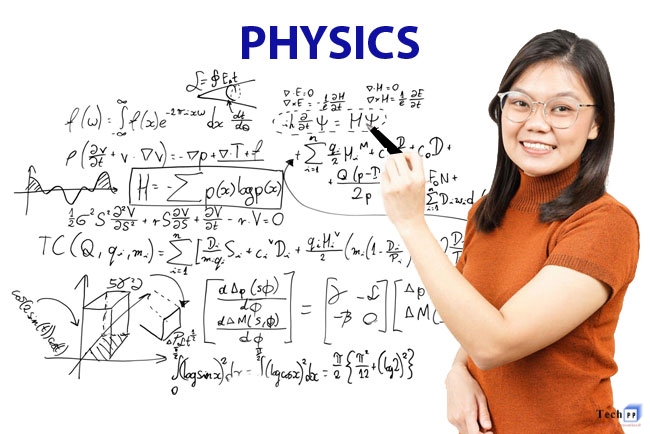Secondary Physics! In secondary schools across the UK, physics often emerges as the subject that sparks both awe and apprehension. From the invisible pull of gravity to the crackle of electric currents, it unpacks the rules governing everything from a smartphone’s battery to a rocket’s launch. Yet for many students in Years 7 to 12, the pace of classroom lessons can leave gaps that hinder progress. This is where secondary physics tuition steps in—not as a last resort, but as a proactive ally. Tailored sessions turn stumbling blocks into stepping stones, helping teens not just survive exams but thrive in understanding the physical world.
Whether you’re a parent eyeing GCSE prep or a student eyeing A-level challenges, secondary physics tuition offers a customized path forward. In this guide, we’ll break down its benefits, how to choose the best fit, and real strategies for success. By the end, you’ll see why investing in one-on-one guidance can redefine a young person’s academic journey.
The Challenges of Secondary Physics: Why Students Need Extra Support
Secondary physics builds layer by layer, starting with basic forces in early years and escalating to quantum ideas by sixth form. Classroom dynamics, however, rarely accommodate every learner’s speed. Teachers juggle large groups, diverse abilities, and packed syllabi aligned to boards like AQA, Edexcel, or OCR. A single missed concept—say, resolving vectors or balancing chemical equations in thermodynamics—can cascade into broader struggles.
Students often report feeling overwhelmed during key units:
- Mechanics: Grasping motion, energy conservation, and momentum feels abstract without visual aids.
- Waves and Optics: Interference patterns or lens formulas trip up even diligent note-takers.
- Electricity and Magnetism: Circuit analysis demands practice that school labs can’t always provide.
- Modern Physics: Topics like radioactivity introduce probabilistic thinking, clashing with intuitive expectations.
Exams amplify these pressures. With GCSE physics requiring 30% math skills and A-levels demanding independent problem-solving, unaddressed weaknesses lead to scores that don’t reflect true potential. Secondary physics tuition targets these pain points, offering the flexibility classrooms lack. It’s about filling voids early, preventing a cycle of catch-up that drains motivation.
Key Benefits of Secondary Physics Tuition for Teens
What sets physics tutoring for secondary students apart? It’s the blend of personalization and practicality that yields measurable gains. Tutors adapt to individual styles—visual learners get diagrams, kinesthetic ones build models—ensuring concepts stick.
Deeper Conceptual Grasp Over Surface-Level Cramming
Unlike rote drills, quality tuition emphasizes why things work. A tutor might start a session on Newton’s second law by analyzing a football kick, deriving F=ma from real footage. This approach boosts retention: studies from the Institute of Physics show students with supplemental help score 15-20% higher on conceptual questions.
Hands-On Experiments to Bring Theory Alive
School labs are gold, but time constraints limit depth. Tuition sessions extend this with at-home setups: a pendulum from string and weights for simple harmonic motion, or a lemon battery for voltage basics. These activities demystify abstract ideas, fostering curiosity that spills into hobbies like drone building or stargazing.
Confidence Boost for Exam Season
Physics anxiety is real—polls indicate 40% of UK teens dread it more than math. Regular tuition acts as a safety net, segmenting syllabi into weekly goals. Mock exams with timed feedback sharpen techniques, turning panic into poise. Parents notice the shift: fewer late-night frustrations, more table-talk about relativity.
Long-Term Skills for Future Pathways
Beyond grades, secondary physics tuition hones analytical muscles vital for STEM careers. It teaches modeling real scenarios—like calculating bridge stresses—mirroring engineering tasks. Graduates enter university or apprenticeships with an edge, viewing physics as a toolkit, not a chore.
How to Choose the Right Secondary Physics Tutor
Picking a tutor isn’t unlike selecting a coach for a sport; alignment matters. With options from local independents to online platforms, focus on these criteria for a strong match.
Qualifications and Experience That Count
Seek tutors with physics degrees and teaching creds, like QTS or PGCE. Years in secondary education mean familiarity with curriculum shifts—vital as 2025 updates emphasize practical skills. Check reviews on sites like Tutorful or Superprof for patterns in student success.
Teaching Style Suited to Your Teen
A trial lesson reveals chemistry. Does the tutor probe for misunderstandings or lecture? Effective ones use questioning Socratic-style, drawing out ideas. For neurodiverse students, accommodations like visual timers or chunked lessons seal the deal.
Format and Logistics: In-Person, Online, or Hybrid?
- In-Person: Ideal for tactile demos, building rapport in a quiet café or home study.
- Online: Platforms like Zoom integrate tools—PhET simulations for wave tanks—perfect for busy schedules.
- Hybrid: Combines weekly video check-ins with monthly lab days.
Rates vary (£25-£60/hour), but prioritize value: progress trackers and parent updates justify costs.
Real Stories: Tuition Transformations in Action
Numbers tell part of the tale, but lives illustrate the rest. In Birmingham, Year 11 pupil Mia battled electricity units, her Bs teetering toward Cs. Her tutor introduced circuit apps, gamifying series-parallel puzzles. By mocks, Mia hit an A*, crediting the “aha” moments that made volts feel friendly.
Across the channel in Leeds, a Year 12 group tackled astrophysics via tuition pods. Debating black hole entropy with scale models, they not only aced A-levels but sparked a school science club. These anecdotes—from urban comprehensives to rural grammars—show secondary physics tuition as an equalizer, leveling fields for all backgrounds.
Practical Tips to Maximize Your Tuition Investment
To squeeze every drop from sessions, treat tuition as a partnership.
Set Clear Goals from Day One
Align on targets: “Master kinematics by half-term” beats vague “improve grades.” Use shared docs for homework logs.
Reinforce Learning Between Sessions
- Daily 10-minute reviews: Quiz apps like Quizlet for formulas.
- Home experiments: Track solar panel efficiency with a cheap kit.
- Connect to life: Relate friction to bike tires during rides.
Monitor Progress Holistically
Grades matter, but watch for softer wins—like volunteering for demos or pursuing physics electives. Adjust if needed; a mid-term pivot keeps momentum.
ALSO READ: Mietmakler: Full Guide to Rental Services
The Bigger Picture: Physics Tuition in a Tech-Driven Future
As 2025 unfolds with AI ethics and green tech booming, physics literacy is non-negotiable. Secondary physics tutoring doesn’t just prep for papers; it arms youth against tomorrow’s puzzles—from fusion energy to climate models. In the UK, where STEM shortages hit 50,000 jobs yearly, early guidance funnels talent where it’s needed.For families pondering next steps, resources like the Institute of Physics’ tutor finder or free Khan Academy primers ease entry. Remember, the goal isn’t perfection but proficiency—a solid base for whatever path unfolds.
In secondary corridors where questions outpace answers, secondary physics tuition lights the way. It’s the quiet force multiplier, turning “I can’t” into “Watch me.” With thoughtful choice and consistent effort, it propels students not just through exams, but toward a world they help shape.


